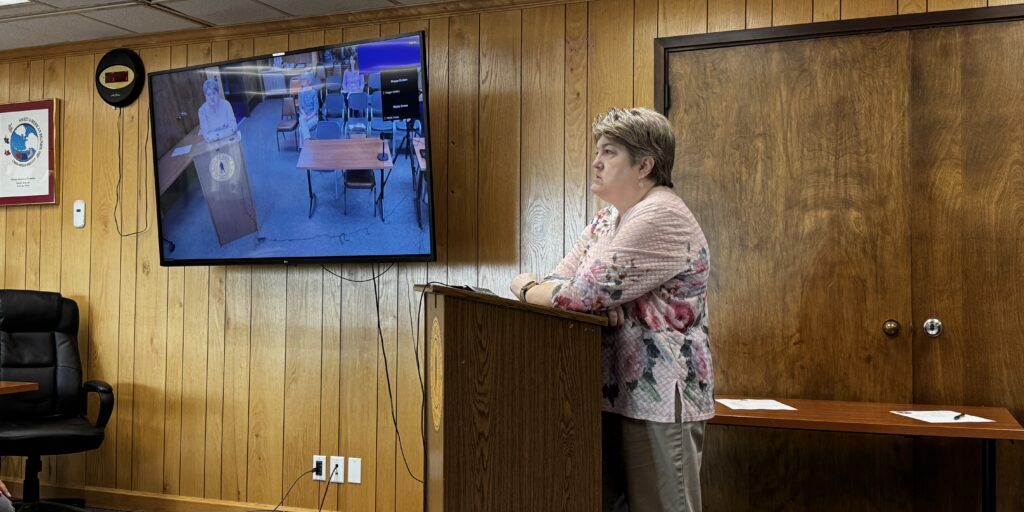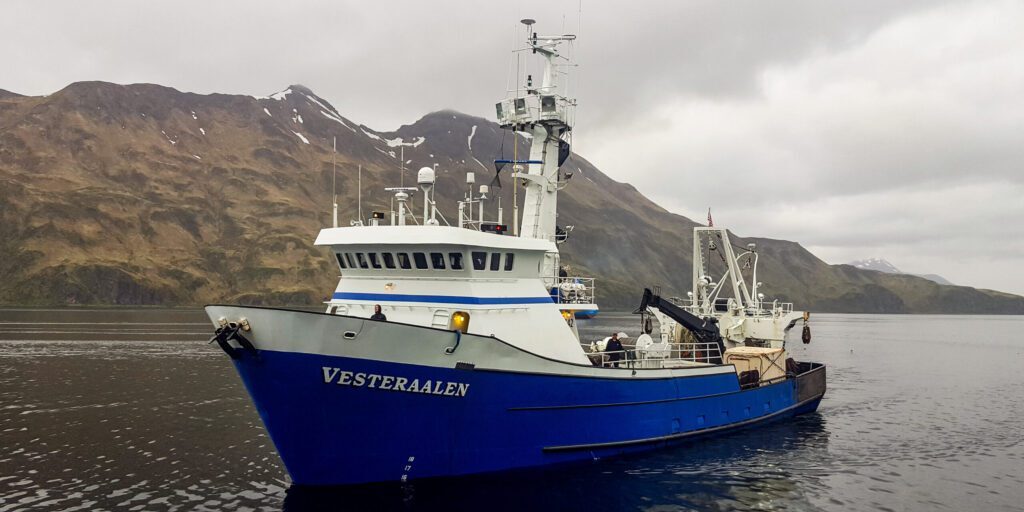Scientists from the National Oceanic and Atmospheric Administration have been trawling the southeastern Bering Sea for the last two months, as they try to track the overall health of the ocean ecosystem. Now, a team from NOAA Fisheries moves northward, where they expect to see more warmer-water fish in larger concentrations than they found last year.
2010 has become a benchmark for some scientists studying the Bering Sea. They say the last few years have shown hardly any resemblance to what was considered an average season at the beginning of the decade.
For example, when looking at water in some areas around St. Lawrence Island, from 2010 to 2017, the bottom temperature went up by eight degrees Celsius (about 14° Fahrenheit).
“That was water that before was near freezing on the bottom, and now it’s in the forties (Fahrenheit). The crabs and whatnot, they went from needing an overcoat, to needing t-shirts.”
That was Lyle Britt, the recently appointed supervisor for NOAA Fisheries Bering Sea bottom trawl survey. He and his research team study the overall health of the Bering Sea ecosystem, while assessing ground fish in the area. Britt has conducted trawl surveys for more than 20 years, up and down the Alaskan Coast, into the Arctic, and even all the way to the northeast coast of the U.S. at the Atlantic Ocean. Throughout his career, he says he’s never seen an ecosystem shift on this level before.
Within the last couple years, warming waters in the Bering Sea have eliminated the cold-water pool which Britt says used to be a pervasive feature. According to Britt, only one percent of the Eastern Bering Sea shelf had a cold pool last year, but otherwise, it didn’t exist.
Once the cold-water barrier started breaking apart in 2017, Britt says large populations of Pacific cod and pollock, for unknown reasons, busted through into northern waters.
“…to the account of a 900% increase in the overall biomass of Pacific cod. So, when I say ‘biomass,’ essentially what I mean is we take all our samples, and the weight of all those samples, and we essentially integrate it out to where we get an estimate of what we think the total weight of that species would be throughout that entire region.”
For walleye pollock, Britt says the biomass estimate was under 20,000 metric tons in 2010 but then jumped up to 1.3 million in 2017.
Despite these sizable increases, there are a couple of species that appear to be decreasing in numbers throughout the Northern Bering Sea. Britt says one of them, Arctic Cod, tend to favor colder waters.
“In 2018, that number dropped to 11 metric tons. That 11 metric tons is what you get when you expand a catch of seven fish, total for the entire region. So that’s one of the primary prey bases, as everyone knows, in this region for everything from some of the seabirds to the marine mammals, to even the larger fishes.”
Another decreasing species is the snowcrab. According to Britt, over 337,000 metric tons were estimated in 2010. That was down to 45% by 2018, with an estimate of 185,600 metric tons.
Both pollock and cod continue to be found in the Northern Bering Sea in large numbers. So, if this summer turns out to be anything like 2018’s trawl survey, then scientists can expect these warm water fish to keep sticking around.
Britt and his NOAA Fisheries team just completed a bottom trawl survey in the Southern Bering Sea. Now, they move on to the Northern Bering and plan to be done in September. After that, NOAA Fisheries will team up with Norton Sound Economic Development Corporation (NSEDC) and fishers in Savoonga to do a special Pacific cod tagging study. Britt says he’s very excited for this unique collaborative research project.
“In fact, Jeff Napp (Britt’s division director with NOAA Fisheries) and I last fall made a trip out to the village, where we presented our results from last year, and that’s where a lot of this got started. They expressed an interest in wanting to participate in helping to understand what’s going on in their ecosystem. And in part, because they actually do have a small CDQ, long line fishery, that provided a platform where we could actually get some near-shore data, which we can’t get from our large vessels.”
Britt hopes this model will lead to more collaboration between local communities and NOAA Fisheries as they track what he refers to as unprecedented change in the Bering Sea.
Britt expects the final results from the Northern Bering Sea trawl survey won’t be ready and available to the public until November.
To report your observations, you can contact NOAA Fisheries and Lyle Britt directly at 206-526-4501. Or email Lyle.Britt@noaa.gov.
Image at top: The Vesteraalen, one of two boats used by NOAA Fisheries to do the bottom trawl survey in the Bering Sea. Photo: Lyle Britt, used with permission.




